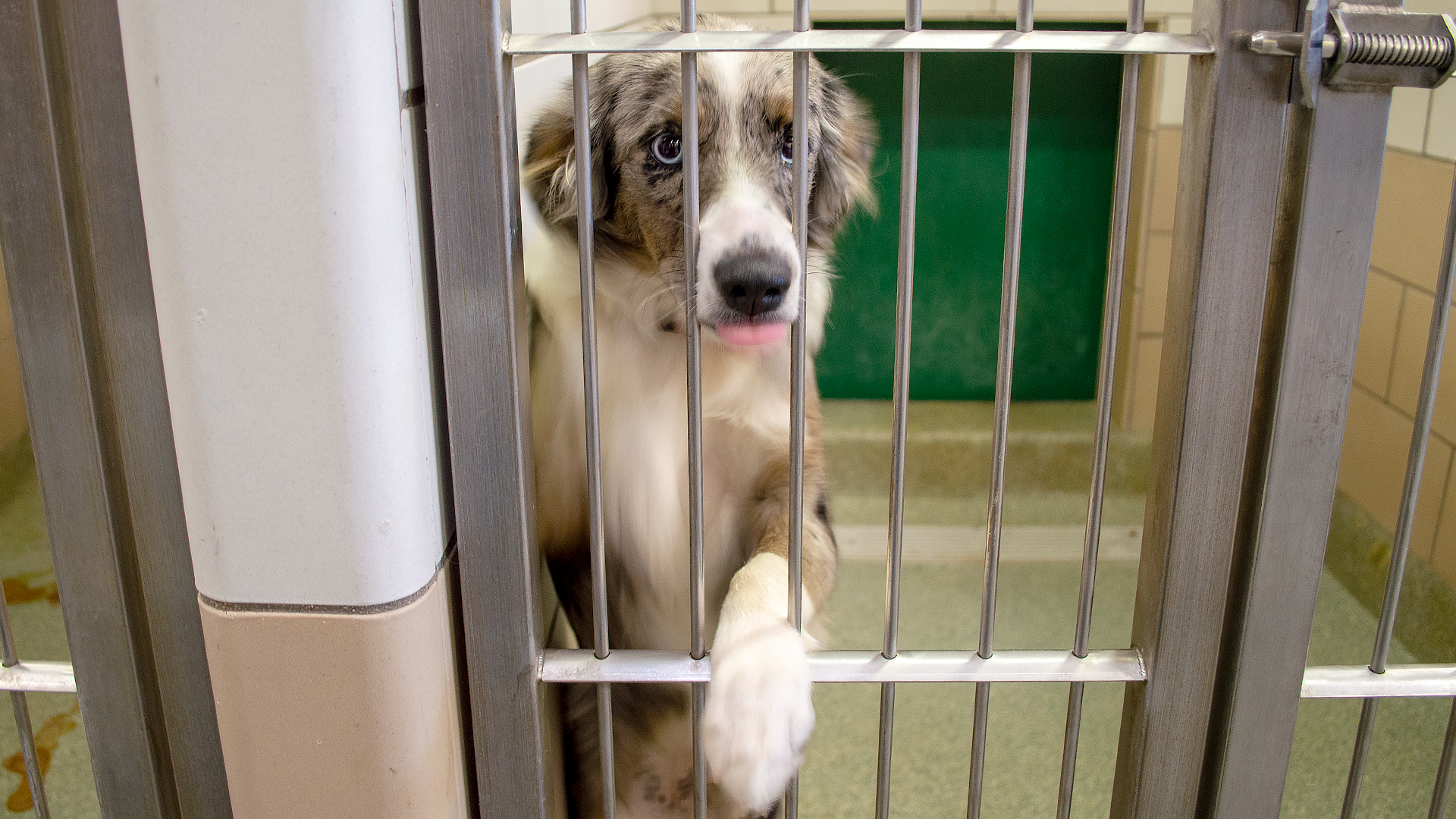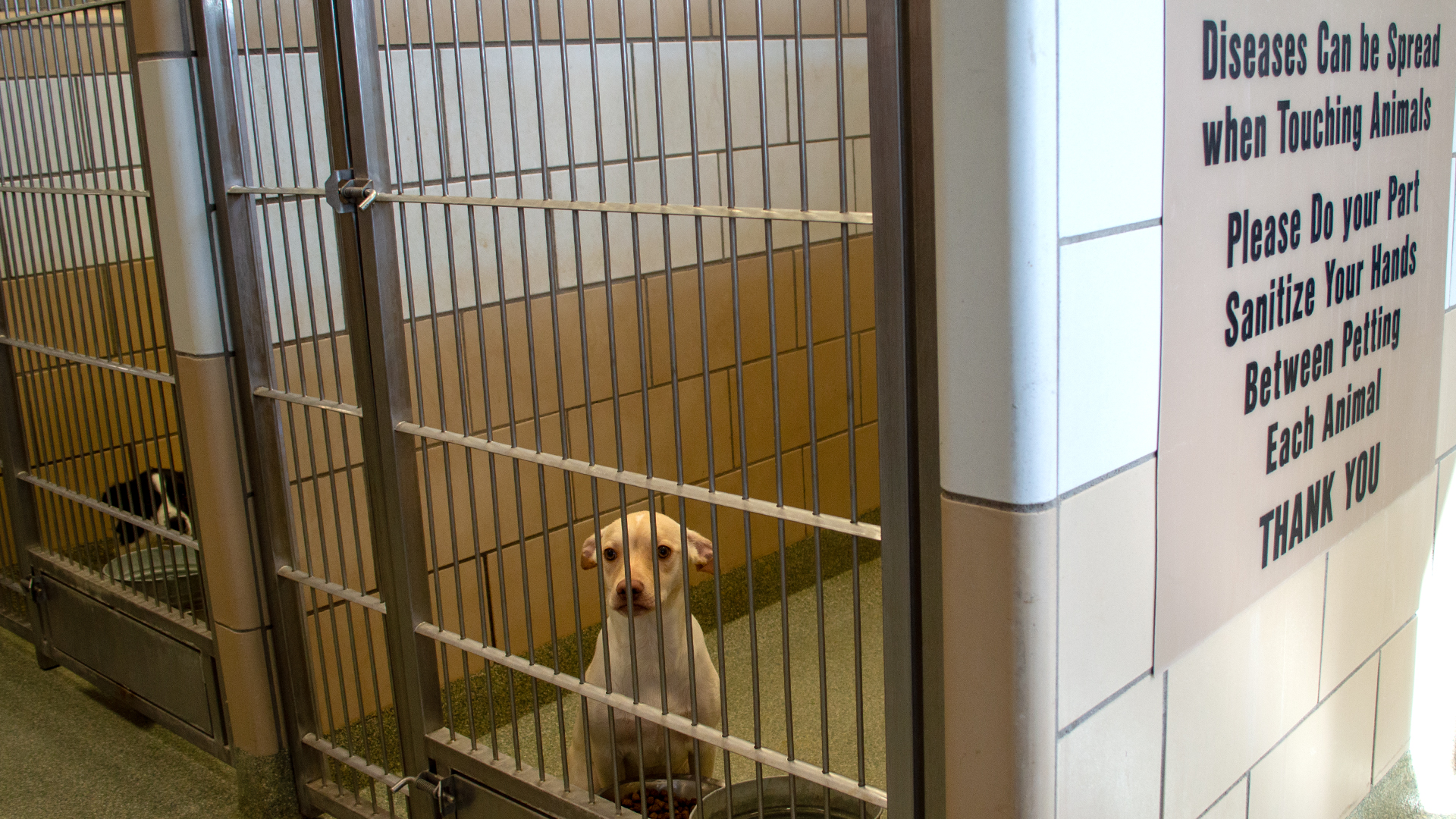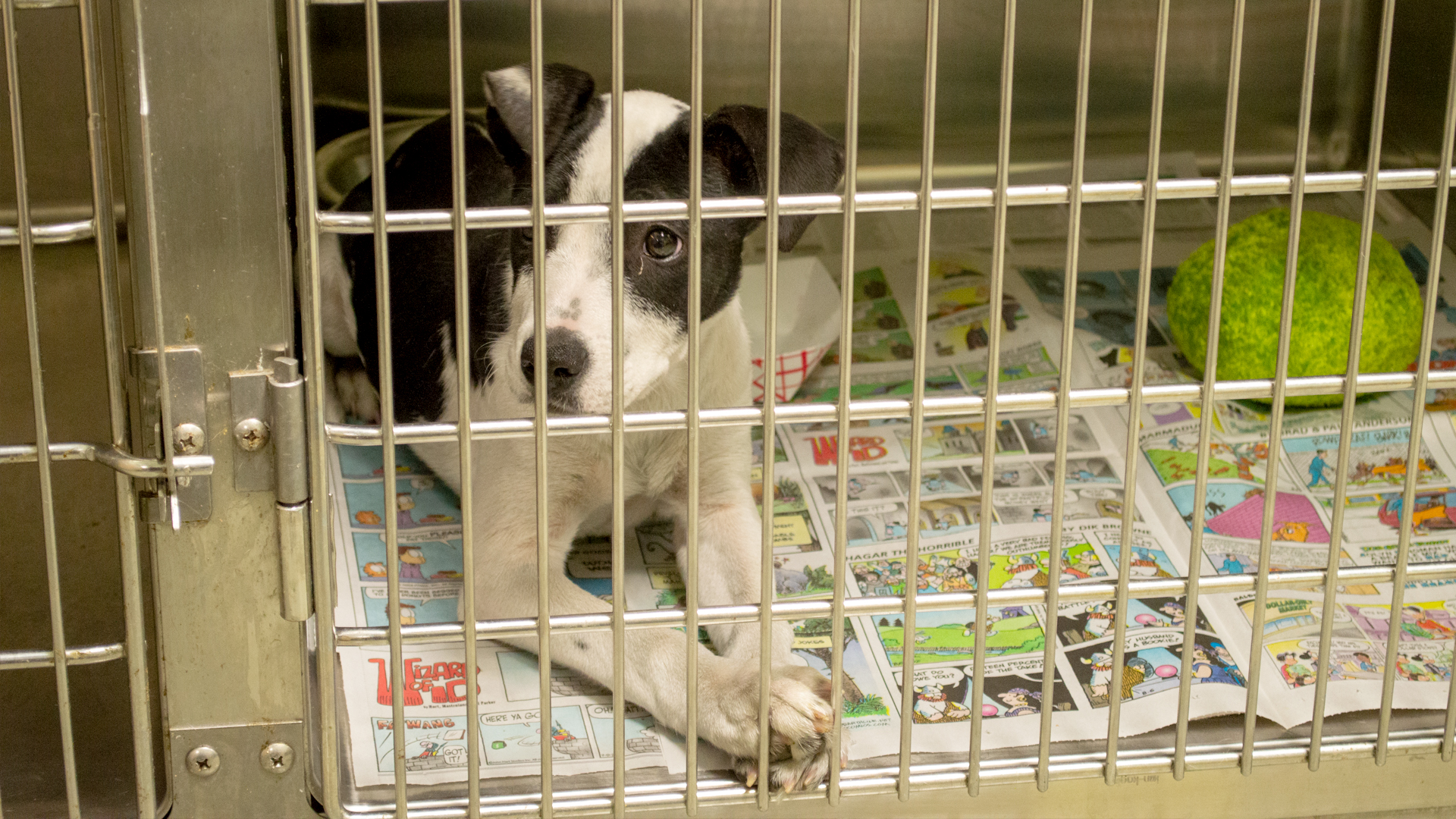Lubbock residents might wait two weeks or more to drop off stray pets at the Lubbock Animal Shelter, which will accept strays only by appointment. There is something that would make the situation better.
Short of that, Allen McRory found out the hard way there’s, generally, no quick way of getting a stray dog off the streets.
The night after a big storm in mid-September, which temporarily knocked out power to 15,000 homes or businesses, McRory found a dog wandering the street near his home in the West End neighborhood. Allen is a Texas Tech student working a job when he’s not in class.
He let the dog, a pitbull, stay with him overnight as he posted images of the dog on social media in hopes of finding its owner. No luck. He also took the dog to a veterinarian to have it scanned for a microchip. Again, no luck.
“I contacted the shelter the day after,” McRory said. “They told me the only thing I could do was set up an appointment to have it taken off my hands.”
The appointment would be five weeks out. Private shelters were either full or only open at certain times.
“So, what I ended up doing was finding her refuge with somebody off of Facebook that’s taking care of her now,” McRory said.
Steven Greene, Lubbock Animal Shelter director said, “We do everything by appointment, whether it’s owner surrenders or stray appointments. The idea of that is to keep from being way over capacity.”
There are exceptions for dangerous animals.
“The appointment intake began in 2020, during the Covid pandemic,” Greene said.
Lubbock Lights asked if that coincided with any “no kill” or “low kill” policies.
“The policy was not put in place to coincide with any euthanasia policies. It is beneficial to balance the intake with the outflow, keeping the population to a healthy and less-stressful environment,” Greene said.
On the day Greene spoke to Lubbock Lights, the shelter had roughly 300 animals.
“I’ve seen it where we’ve had as many as 600.”
The shelter does not have a specific number for capacity, he said. The standard is how many animals can get adequate care.
“So, about 300 is pretty good for us being a municipal shelter.”
The shelter performs more than 1,300 service calls each month. Animals are not put down simply to make room, and the shelter claims a “save rate” of more than 90 percent.
“The only thing we euthanize for is extreme behavioral issues, sick, injured and end-of-life issues,” Greene said.
Many strays, here’s why
Around 98 percent of animals entering the shelter for the first time are not spayed or neutered, and about 95 percent are not microchipped.
“In certain neighborhoods, there are a lot of animals at large,” Greene said. And Greene contends Lubbock is notorious for absentee landlords.
“A lot of those landlords won’t put the money into the fences,” Greene said.
“You see people that don’t spay, neuter or vaccinate. Those animals get loose and create more animals,” Green explained.
In parts of town, this is what happens. In others, he said, you never see a loose animal.
There are no plans to build a bigger shelter to get more stray animals off the streets.
“If you built another building this size, you’d have it full of animals in a short time because of the large amount of animals in Lubbock – the stray animals, irresponsible owners and what have you,” Greene said.
If a bigger shelter is not the answer, something else might work.
The need for fosters
“If there was one thing to get the community on board with, it would probably be fostering. And that’s something that I think any city could use more of,” said Greene.
He has 15 dedicated fosters, he said.
“That’s something really lacking in Lubbock,” Greene said.
Not all fostering is created equal. Medical fostering, for example, is a big commitment but sometimes fostering can be just a few hours.
“We also have a lot of Tech students who will do doggy days out and sleepovers and what have you, which is more of a very temporary foster,” he said.
The “doggy day out” started almost by accident. A college student asked if she could take a dog out just long enough to get ice cream.
“And it blew up from there,” Greene said. “Now we have numerous people who come in every day and take dogs out.”
The only rule is you cannot take them to an off-leash dog park for liability reasons.
Greene would like to have 500 or 1,000 or even 1,500 dog and cat foster parents.
Dedicated volunteers
They could also use more volunteers.
“We have probably 30 really dedicated volunteers,” Greene said.
Doing the dishes and laundry is a big help. The shelter goes through 500 or so food bowls every day. Towels and blankets need to be washed and other tasks. Socializing cats and taking dogs out for a walk around the shelter are also big ways to help.
Volunteer Christine Rivas has been going to the shelter off-and-on for four years.
Her priority is her grandchildren, but she also said, “I love animals.”
“A lot of people complain, but yet, they don’t do anything. They don’t go in there and see what’s going on,” Rivas said. “See what the animals need – see what they go through.”
She goes in from time to time to clean the kennels and pins. It’s hard work and she’s not afraid to spend an entire day getting the job done. Rivas used to be a caretaker, working for one couple for 20 years and a few others from time to time.
Does it make a difference? “A lot,” she said.
“I mean, just the scratch on the chin or the ears, or just the love – I mean, some of them don’t know what that is,” Rivas said. Just a hug or a chance to go outside for fresh air helps a dog a lot.”
But if scatological scrubbing is not your thing, Greene said there are many ways to help.
“We will find something that meets your passion and your skill set,” Greene said.
For those who wish to foster, adopt or volunteer, contact Lubbock Animal Shelter at (806) 775-2057, on Facebook or via email at [email protected].




















 Facebook
Facebook